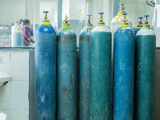Jun 23, 2010
Most businesses took steps to protect workers
Most US employees say their companies took steps to protect them from illness during the H1N1 pandemic, such as providing hand-hygiene solutions (81%), encouraging ill employees to stay home (80%), providing information on stopping flu spread (77%), and promoting vaccination (60%). About 42% said employers created backup plans to cover workload, and the same percent reported expanded leave policies. The poll by the Harvard School of Public Health (HSPH) was conducted Apr 21 to May 13.
http://www.hsph.harvard.edu/news/press-releases/files/h1n1-employee-topline-6.22.10.doc
Jun 22 HSPH poll results
Nature editors take pandemic conspiracy theorists to task
Saying, "The council should think twice," the editors of Nature today advised the Council of Europe's parliamentary assembly against voting this week to express alarm over the World Health Organization's (WHO's) pandemic response. The journal said it has "heard many objections to the conclusions of the report on which the resolution is based." The editorial lauded transparency but said it would have been unwise to exclude from the H1N1 response all experts with ties to drug firms.
http://dx.doi.org/10.1038/465985a
Jun 24 Nature editorial
CT findings may help diagnose severe H1N1
Researchers found that high-resolution CT (HRCT) findings can help diagnose severe cases of pandemic flu. Of 106 H1N1 patients, 29 (27%) had multifocal asymmetric ground-glass opacities alone on plain CT, but the finding was much more common in those who required mechanical ventilation compared with those who didn't (63% vs 20%). On HRCT, the ground-glass opacities had a distinctive distribution that could aid early diagnosis of severe infection.
http://dx.doi.org/10.1016/j.ejrad.2010.05.029?rss
Jun 20 Eur J Radiol abstract
PCR method detects pandemic-origin viruses in pigs
In a study in Clinical Chemistry, researchers found that a method using polymerase chain reaction (PCR) can detect reintroductions of the pandemic H1N1 virus in pigs. Their test detected all 10 viruses of pandemic H1N1 origin among 48 swine influenza strains isolated from an ongoing surveillance program. The authors concluded, "These assays might be useful screening tools for identifying viral reassortants derived from pandemic H1N1/2009 or its precursors."
http://www.clinchem.org/cgi/content/abstract/clinchem.2010.149179v1
Jun 21 Clin Chem abstract

















